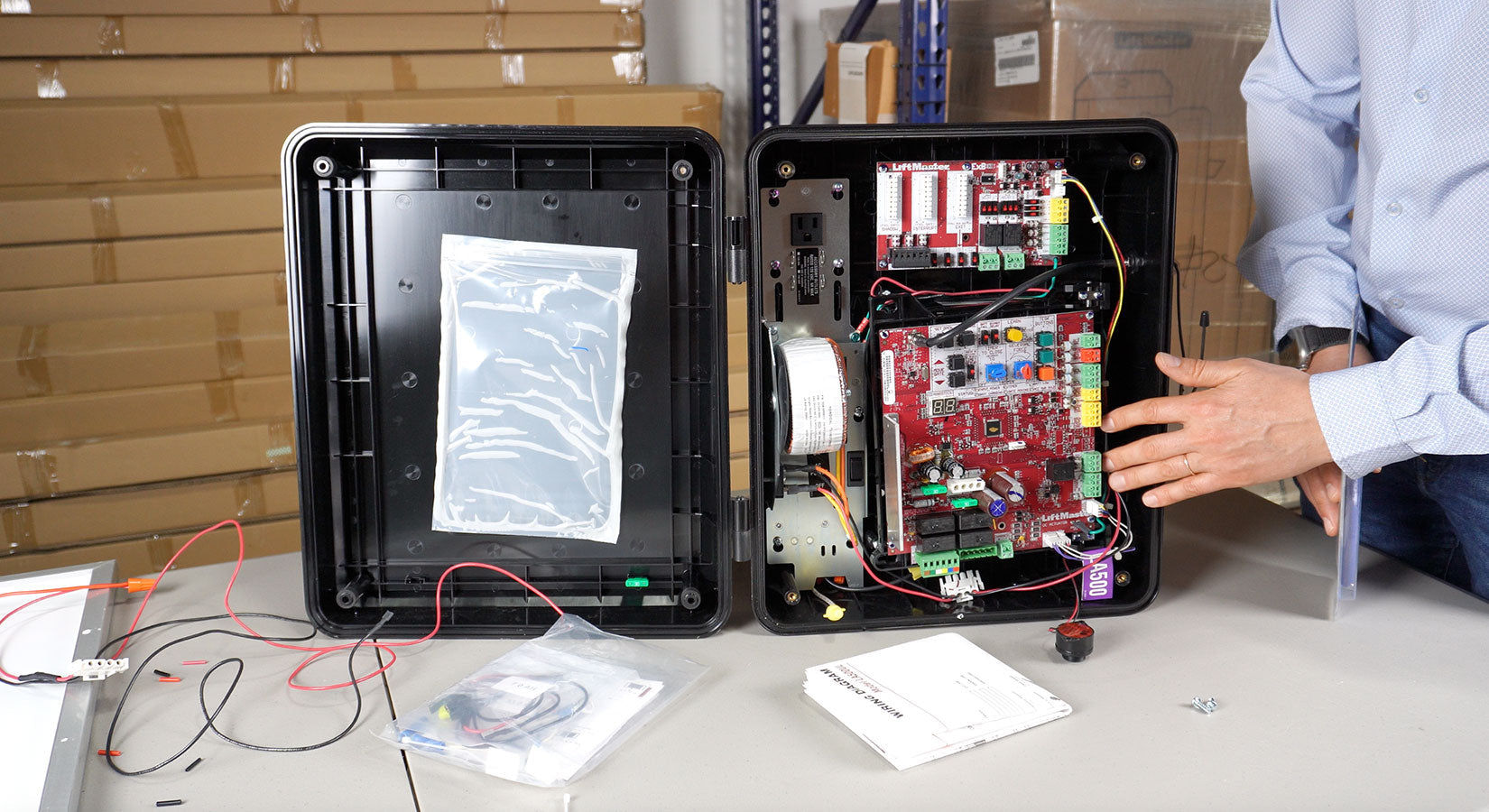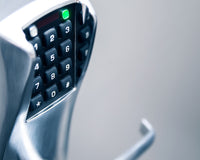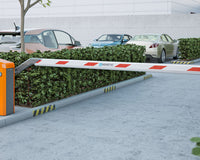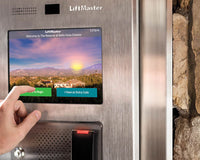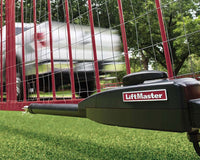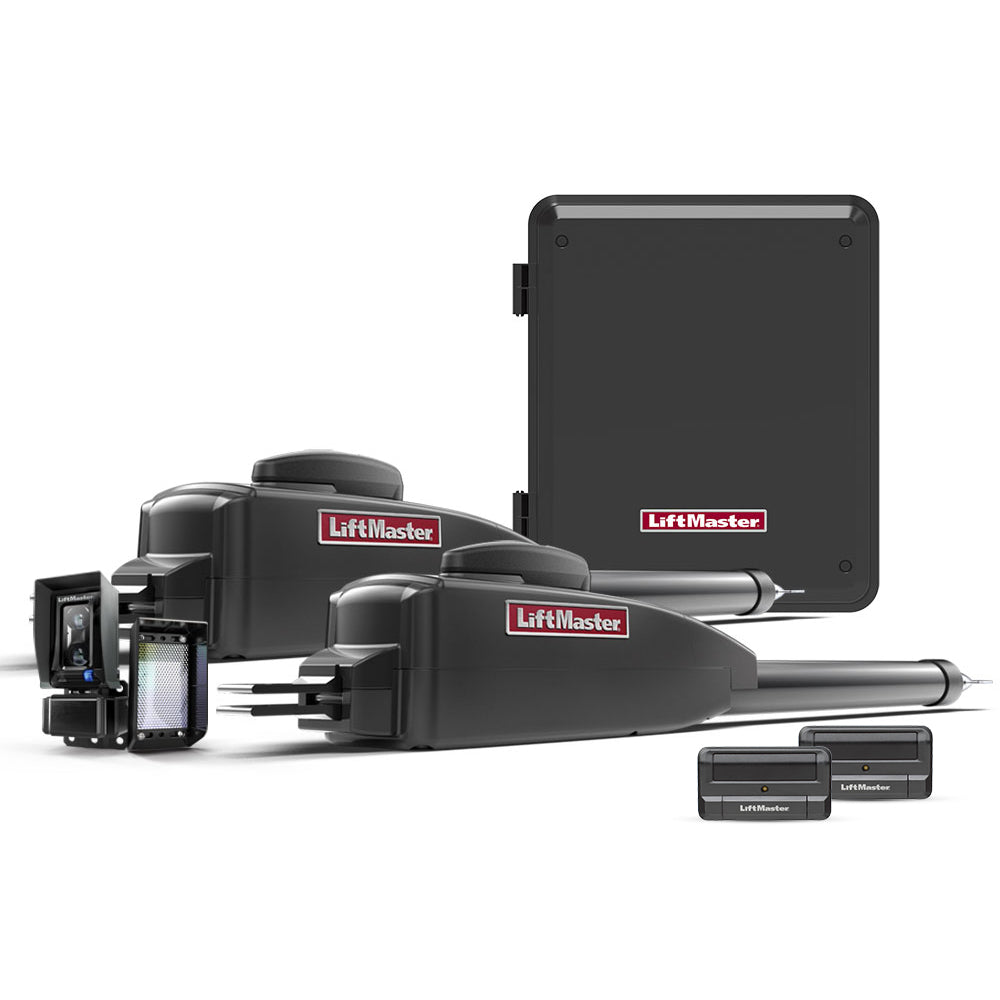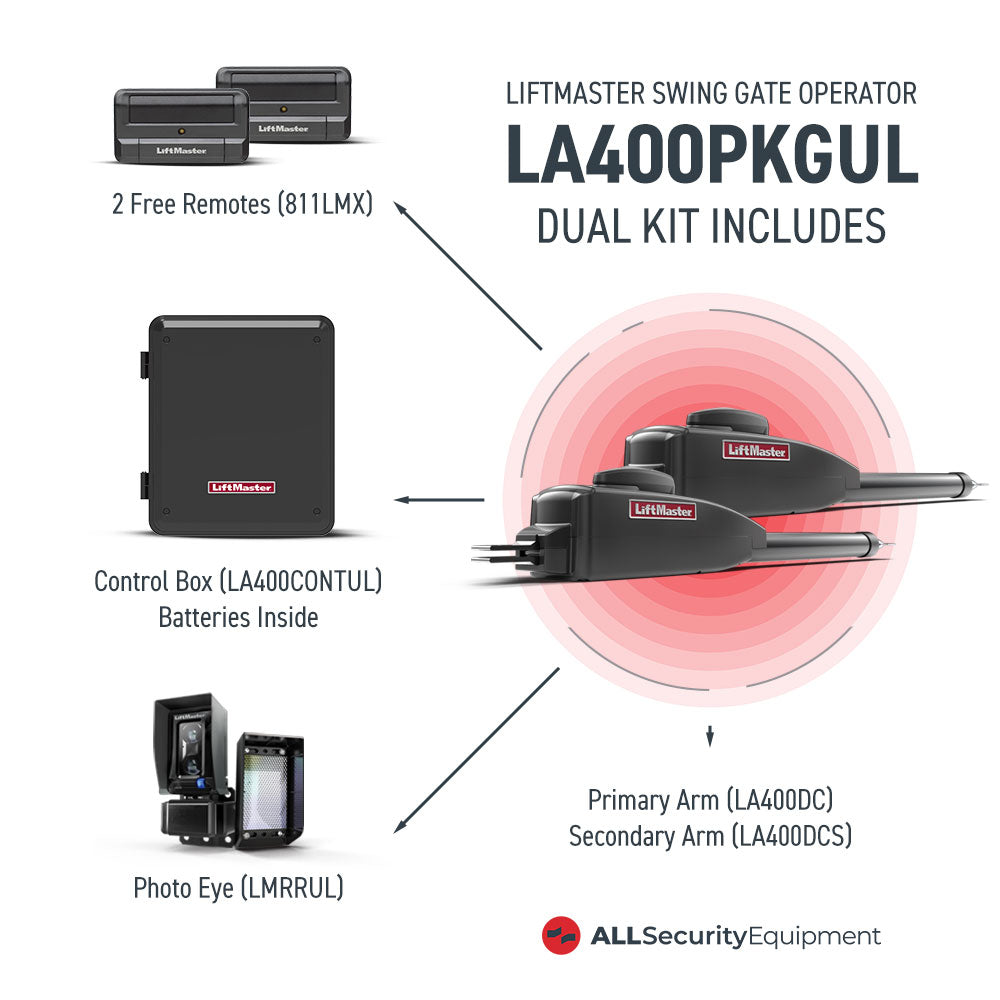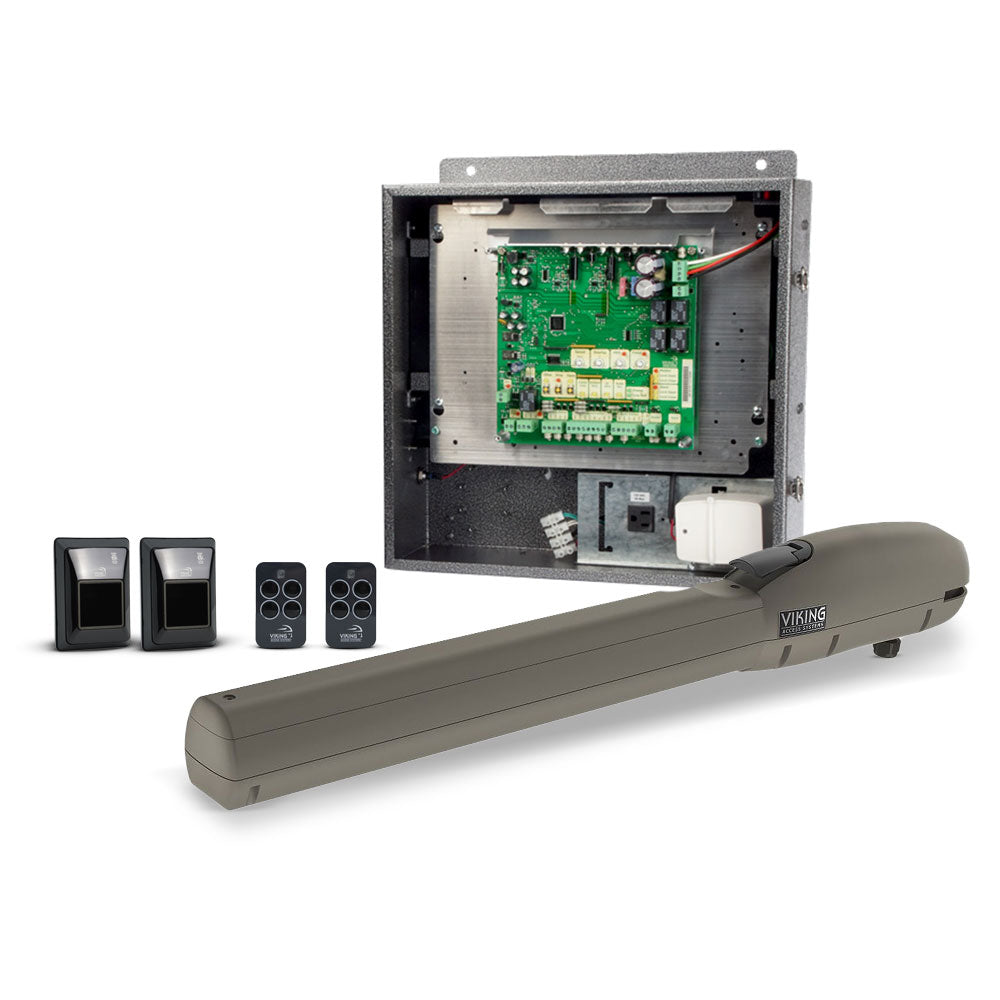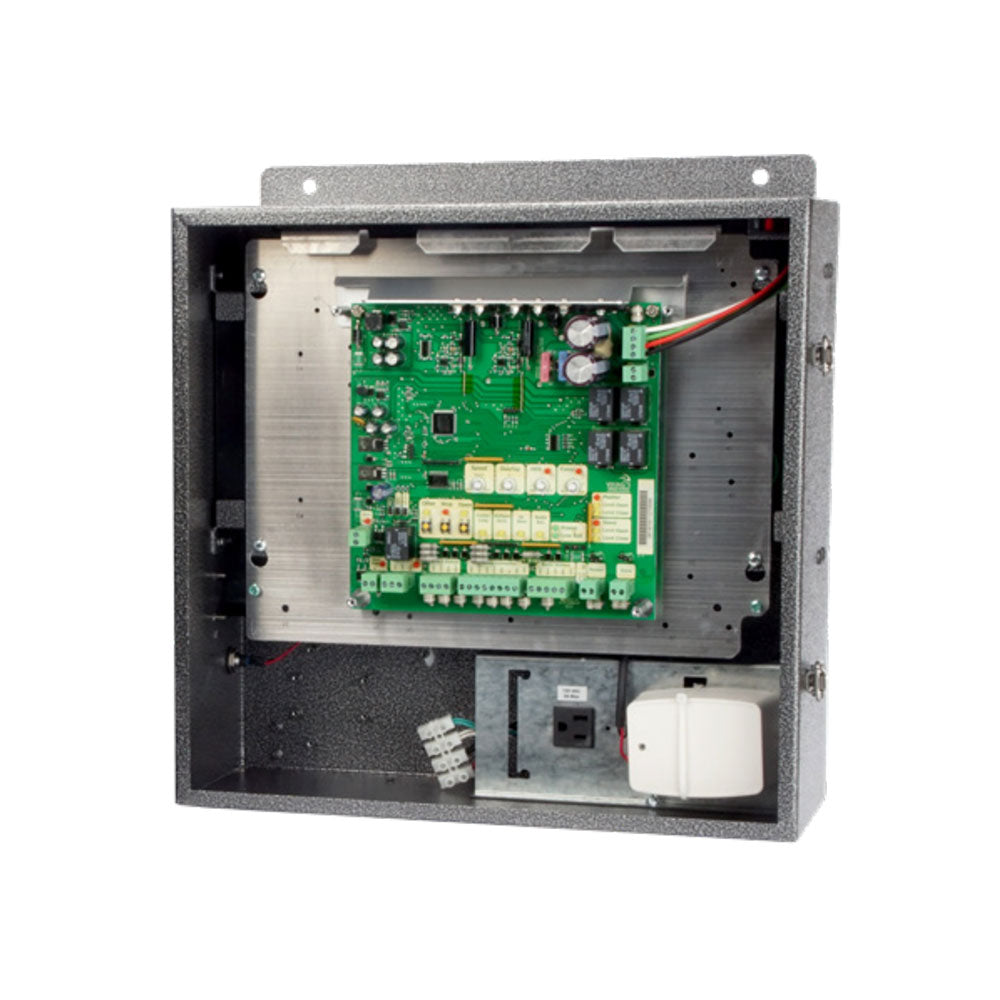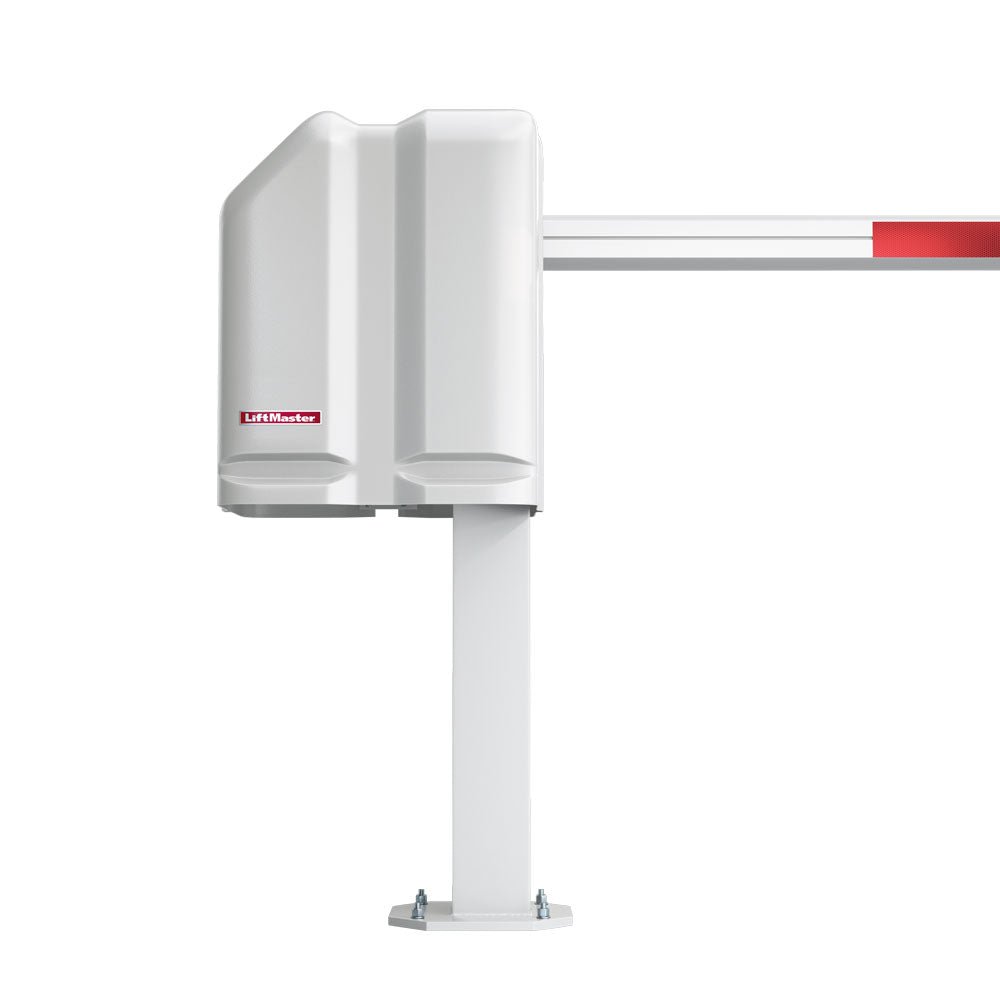When installing a gate automation system, one of the most common mistakes is overloading the control board by connecting too many accessories. Understanding what can safely draw power from the control board—and what must be powered separately—can help prevent system failures, downtime, and costly repairs.
In this guide, we’ll break down exactly what’s okay to power directly from a gate operator’s control board, and which devices should always have their own dedicated power supply.
Why It Matters: Control Board Power Limits
Most gate operator control boards can supply a limited amount of accessory power. Exceeding this threshold can cause:
- Voltage drops
- Accessory malfunction
- System instability
- Permanent damage to the control board
To avoid this, it’s important to understand what can safely be connected within the current limit, and what should be powered externally.
Safe to Power from the Control Board Based on LiftMaster’s Average Limit
(As long as the total current draw stays under 500 mA)
These devices are generally low-power and are designed to work seamlessly with gate operator systems.
|
Accessory |
Details |
|
Photoeye |
Stand-By Current 20 mA - Trigger Current 50 mA. |
| Wired Basic Keypad |
Stand-By Current 10 mA - Trigger Current 150 mA. Only for AC powered operators. Solar powered setups need separate power. |
|
Receiver |
Current draw 50 mA. |
|
Edge Receiver |
Current draw 5.8 mA for 24V systems - 12 mA for 12V systems. |
|
Cartell Wired Exit Sensor |
Standard wired sensors use very little power; safe to connect. |
|
Fire Switch Box |
Current draw 15 mA. |
|
SOS Siren Sensor |
Stand-By Current 0.1 mA - Trigger Current 25 mA. |
Important: Values shown for current draw are approximate and can differ depending on the specific model. The total of all connected devices must not exceed 500 mA combined. If you’re uncertain about a device’s power draw, consult the spec sheet or manufacturer.
Do NOT Power These from the Control Board
(They require more current than the board can provide, or are sensitive to voltage drop)
Devices in this category must be powered from an independent, properly rated power supply.
|
Accessory |
Why It Needs External Power |
| Any accessory drawing over 500 mA |
Even one high-draw device can exceed the board’s capacity. |
|
Maglocks (Magnetic Locks) |
Current draw 250 mA for 24V systems - 500 mA for 12V systems. High activation current requirement. |
|
Cameras |
Current draw 200-1000 mA per camera. Video processing and IR draw too much power. |
|
Video Intercom Systems |
Stand-By Current 80 mA - Trigger Current 300 mA. Audio/video needs could exceed board limits. |
| LED Lights |
Current draw 90-550 mA. |
|
Video Keypads |
Trigger Current 300 mA - Peak Demand 2000 mA. |
|
Long-Range Readers |
Stand-By Current 470 mA - Trigger Current 1.8 A. High standby current draw and during operation. |
Note: Values shown for current draw are approximate and can differ depending on the specific model.
Tip: Use a dedicated 12V or 24V power supply with ample capacity and voltage regulation for high-draw devices.
Average Accessory Power Output by Gate Operator Manufacturer
| Manufacturer | Average Accessory Power Limit |
| All-O-Matic | 750 mA (24VDC) - 500 mA (12VDC) |
| BFT | 500 mA (230V) - 1000 mA (110V) |
| DoorKing | 250 mA |
| Genie | 800 mA |
| GTO | 1000 mA |
| HySecurity | 2 relays at 2A - 1 electromechanical at 20A |
| Nice | 300 mA |
| LiftMaster | 500 mA |
| Linear | 500 mA |
| Ramset | 1000 mA |
| USAutomatic | 750 mA |
| Viking Access Systems | 750 mA |
| SEA | 250 mA |
Special Consideration: Solar-Powered Gate Systems
If your system runs on solar power:
- Be extra cautious with accessory loads.Even low-power devices can drain batteries if connected incorrectly.
- Even low-power devices can drain batteries if connected incorrectly.
- Use sleep-mode compatible accessories where possible.
- Avoid powering anything directly from the board that isn’t absolutely necessary.
Installer Tips for Safe Accessory Power
- Check Manufacturer Specs: Always verify the current draw for every accessory.
- Use a Multimeter: Test the actual draw in the field if the spec sheet is unclear.
- Calculate Total Load: Add all accessory current demands and stay under 500 mA.
- Label & Document: Keep clear records of what is powered where.
- Leave Headroom: Don’t push the limit—leave at least 10–20% buffer.
Powering Accessories the Smart Way
A well-planned gate operator installation isn’t just about the gate itself—it’s about power management. By respecting the limits of your control board and offloading high-demand accessories to separate supplies, you ensure:
- Reliable operation
- Long equipment lifespan
- Fewer callbacks or troubleshooting visits
Whether you’re powering a simple keypad or a fully integrated video access system, smart planning starts with knowing what your board can handle—and when it’s time to bring in external power.
Have questions? Our team is here to help.
Reach out to us at All Security Equipment for expert advice on powering gate accessories safely and effectively.

